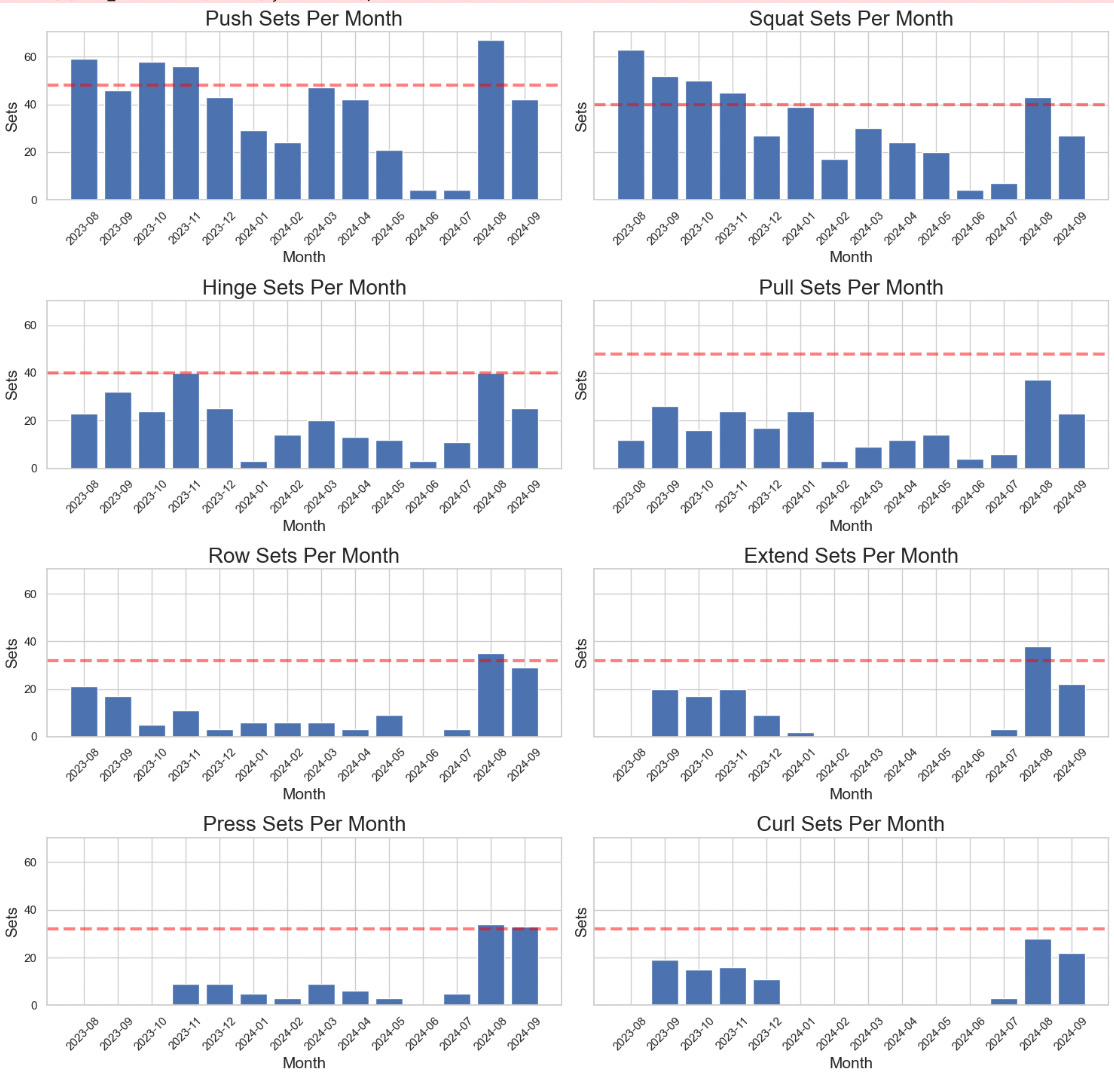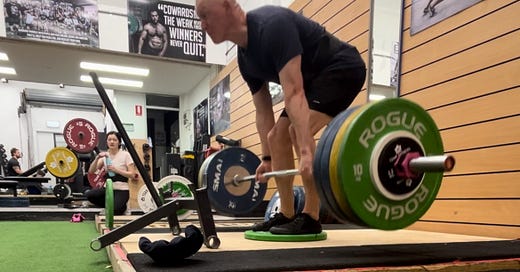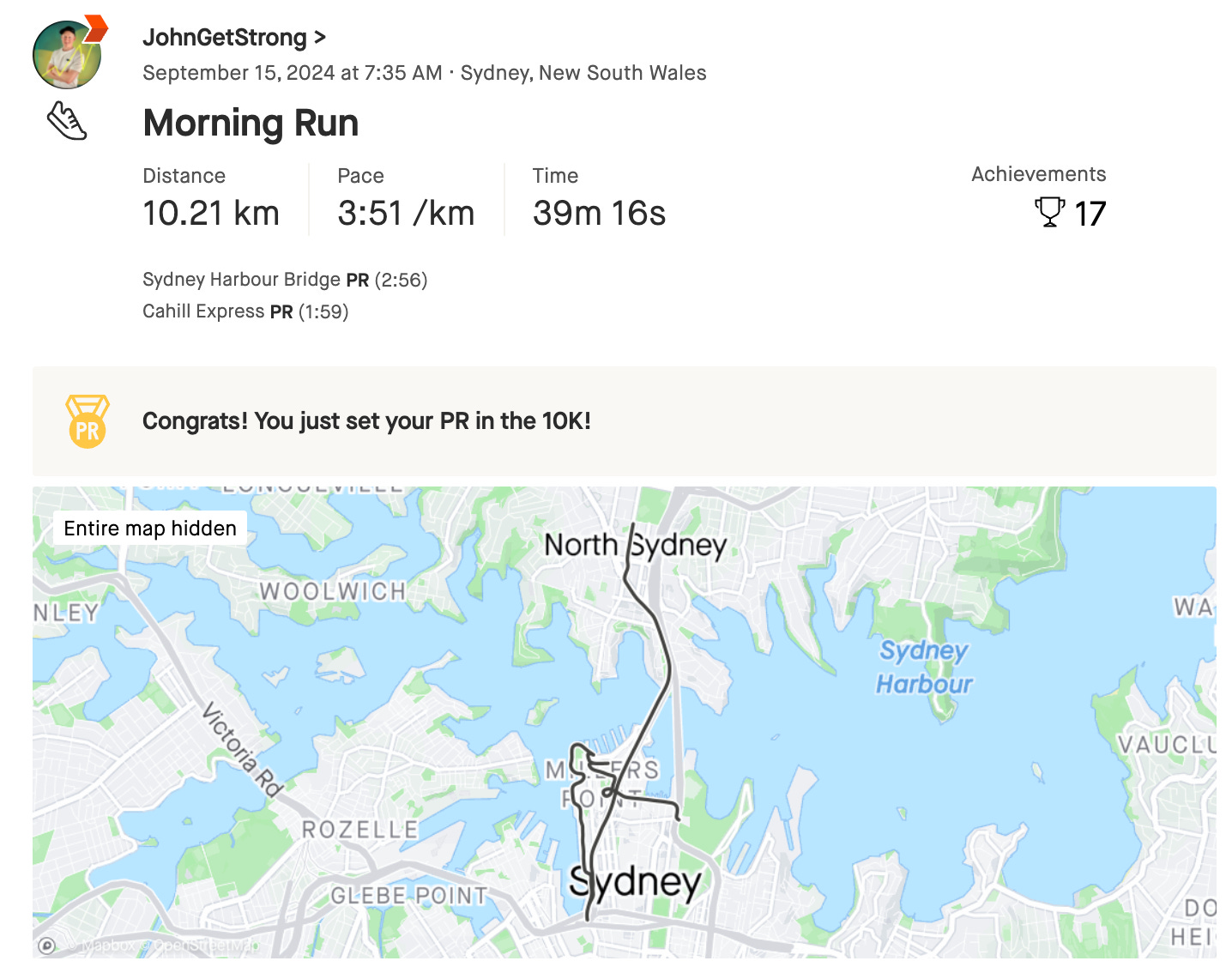Strength Gains: How I Added 2.5 kg (5.5 lb) of Lean Mass in 70 Days
Key Takeaways from 10 Weeks of Muscle-Building Training
The last two months have been among the most successful strength and muscle-building phases of my life.
During this time, I gained 2.5 kg (5.5 lbs) of lean mass, as measured by a DEXA scan, and set new personal bests in the deadlift (200 kg) and bench press (120 kg).
Simultaneously, I maintained solid endurance performance, setting new personal bests in the 14 km (55:16) and 10 km (39:16).
In this post, I'll break down the key components that contributed to this successful strength-building season.
First, the numbers
Over 70 days, I gained 2.48 kg of lean mass—an average of 35 g per day. This was accompanied by a 0.77 kg increase in fat mass, raising my body fat percentage slightly from 15.7% to 16%—a reasonable change during a hypertrophy-focused training block.
Strength gains came alongside the increase in lean mass, with new personal bests in the bench press (120 kg/264 lbs) and deadlift (200 kg/440 lbs).
In terms of endurance training, I ran two main races during these months. The first was the 14 km City2Surf, which I completed at a pace of 3:57 min/km—the longest I’ve ever maintained a sub-4:00 min/km pace. I also ran the Sydney 10km in 39:16, which also was a PB for the 10km.
Endurance training was not my focus during this period, so it was encouraging to maintain good fitness for those two events.
So what made the difference?
(1) Increasing Strength Training Volume
First, and most importantly, I radically increased my weekly number of strength training sets.
At the start of the year I was sustaining about 30 sets per week in the gym (roughly 10 sets, 3 times a week). During the Hyrox season between June and July, this dropped to near zero as I focused on more circuit style training.
For this most recent 10 weeks of training, I increased the number of sets to about 70 per week. This was the highest volume of strength training I’ve ever undertaken and was likely the single biggest factor contributing to the lean mass gain.
This shouldn’t be surprising, as many studies have shown a relationship between the number of hard-working sets per week and muscle gain.


(2) Decreasing Running Volume
For the first seven months of the year, I averaged 70 km (44 miles) of running per week. I then reduced this by about 40%, bringing it down to around 40 km per week during the strength training block.
This helped me to be in a more fresh state than usual during my strength training sessions. It also provided a psychological boost, making me feel more ready and motivated to train hard in the gym. I felt this adjustment was necessary to achieve the new level of strength training volume.
I also suspect that the Vo2 Max improvements I’ve developed over the last year gave me an edge in recovery. My body was primed to effectively recover and meet the demands of strength training.

(3) Increasing Weight
I ate in a calorie surplus, consuming 4,000 to 4,500 kcal per day on average. At the same time, I hit significant protein levels (more than 200g most days), providing the necessary building blocks to fuel that muscle development.


Final Thoughts
I’ve now started to slowly reintroduce more endurance training and Hyrox style workouts again. The main benefits I’m noticing include improved performance on the ergs (ski and row) and significantly better wall-ball performance. In terms of endurance, it seems that my volume capacity is quickly returning (I completed an 85 km week last week), while my speed is stronger than ever (I also hit a new 400 m PB at the end of my track session last week).
Overall, I’m very glad I undertook this 10-week strength-focused block!
You can see a full log of the 534 working sets across 33 exercises that formed this training here.











That’s some solid hybrid work!